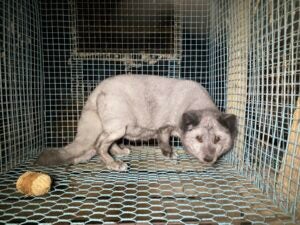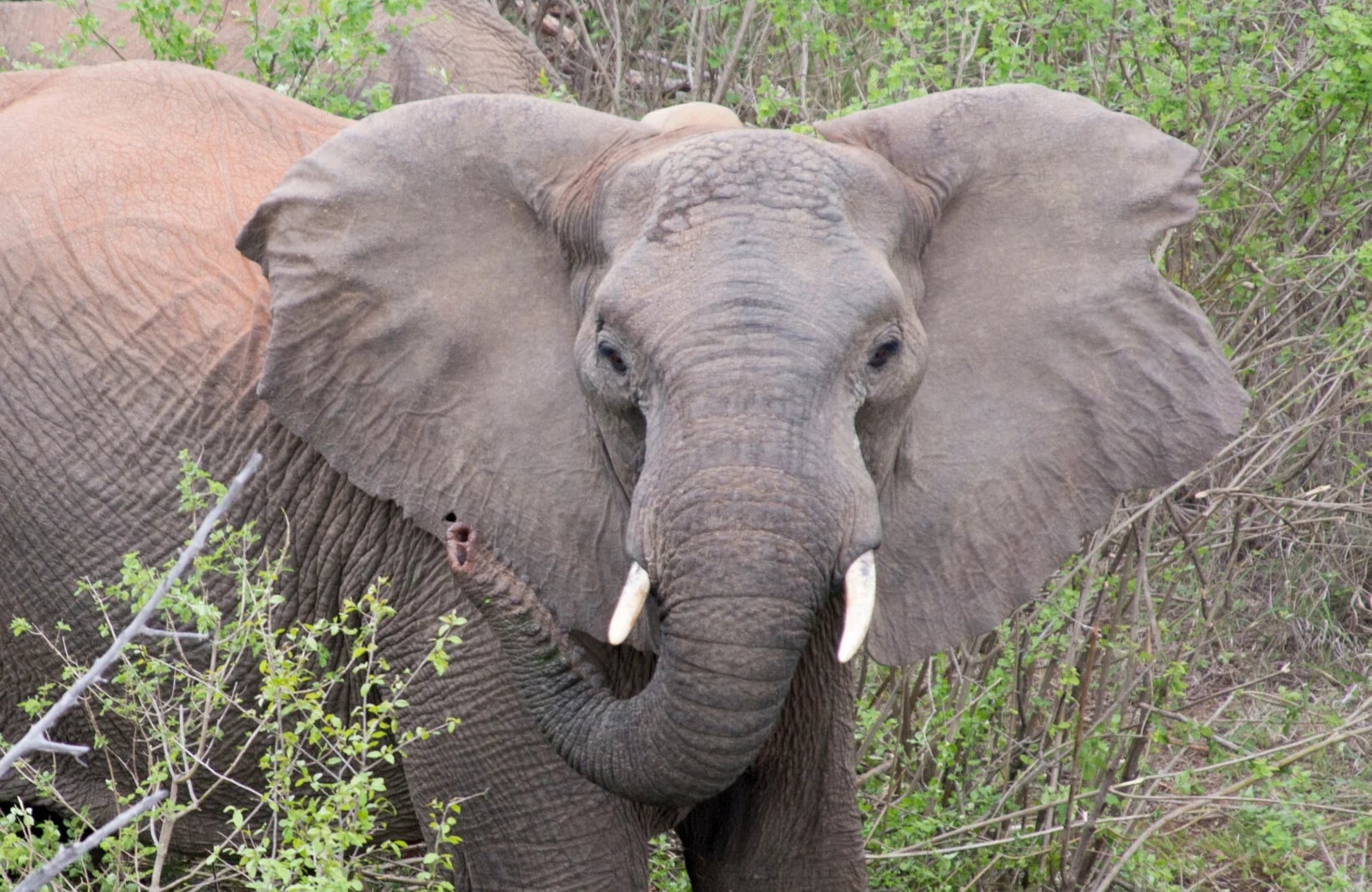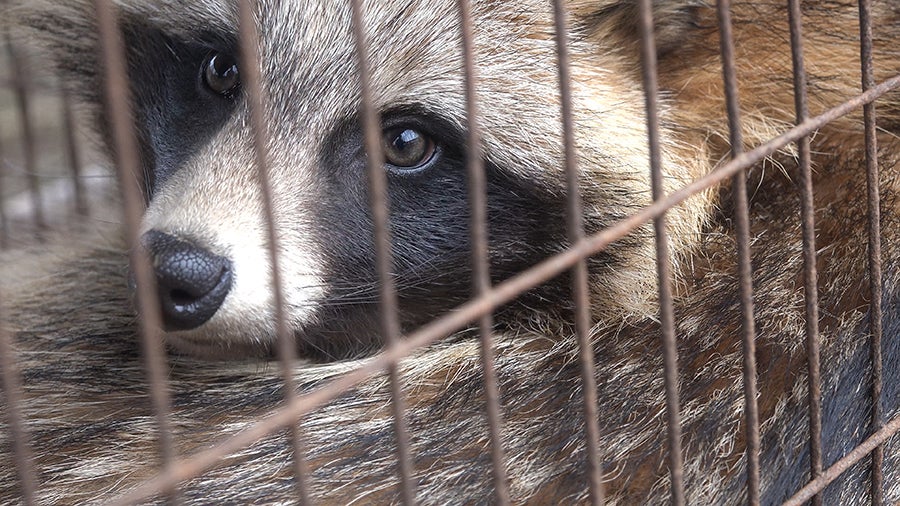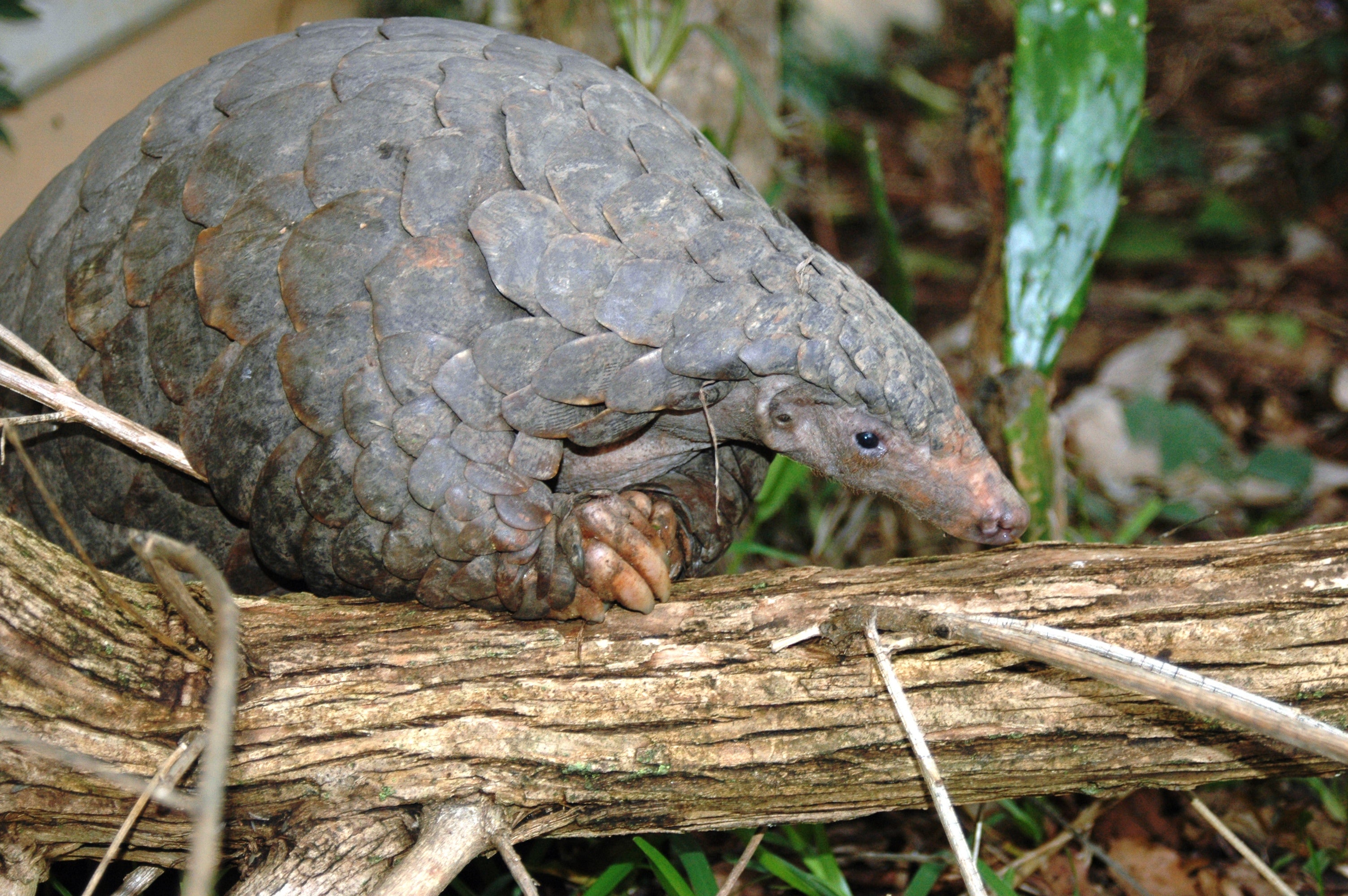
LONDON—An undercover investigation by Humane Society International/UK and Finnish animal campaigners Oikeutta Eläimille reveals deplorable conditions and distressing animal suffering on fur farms in Finland, a country that has exported more than £11million of fur to the UK since 2000 despite the same fur farm cruelty being banned in the UK. Fox fur originating from Finland is used by brands including Fendi, Moncler, Yves Salomon, Woolrich, Herno and Max Mara, and is seen in stores including Harrods, Harvey Nichols and Flannels.
The fur trade claims that almost 100% of fox and raccoon dog fur farms in Finland, and 96% of mink fur farms, are certified by the fur trade’s SAGA Furs* assurance scheme promising “the highest level of animal welfare”. So, Humane Society International/UK, which leads the #FurFreeBritain campaign for a UK fur sales ban, took high-profile media veterinarian and animal welfare campaigner Dr Marc Abraham OBE to see for himself the grim reality for animals behind the fur trade’s glossy marketing. They visited three fur farms in the Ostrobothnia region of Finland, two of which are SAGA certified, and they found foxes in small, barren cages suffering with deformed feet, diseased eyes, missing ears and obesity.
Finland is the biggest producer of fox fur in Europe and the second biggest in the world, exporting millions of pounds worth of fur around the world including to the UK. Since banning fur farming in 2000 on ethical grounds, the UK has imported more than £850million of fur from a range of countries including France, Italy, Poland, China and the United States, with more than £11million worth of fur from Finland alone. Through its #FurFreeBritain campaign, HSI/UK is urging the government to end this by banning UK fur imports and sales, a move supported by 72% of the British public. The government is currently considering a fur sales ban and recently held a public consultation which received 30,000 responses.
Claire Bass, executive director of Humane Society International/UK, who visited the fur farms, said: “Fur trade buzzwords about welfare ring incredibly hollow when you are staring into the eyes of an animal tormented by a life of deprivation for a frivolous fashion item that nobody needs. Most fashion-forward designers have gone fur-free because of the indefensible cruelty. But to those designers who still use fur, and to the UK government that still allows British businesses to trade in fur, our message is clear – it’s time to stop being complicit in this cruelty. It’s a clear double standard that the UK is outsourcing to countries like Finland the very same fur farm cruelty we banned here two decades ago.”
Veterinarian Dr Marc Abraham OBE said: “As a vet and campaigner who has dedicated my life to animal welfare, it was not only truly depressing to seeing the appalling state of these foxes, but still worse to know that the UK is 100% complicit in this legal fur trade cruelty. What I witnessed first-hand was shameful from an animal welfare point of view, row upon row of pitiful animals imprisoned in tiny cages, barely larger than the length of their body from nose to tail. Many of the foxes we saw had painfully swollen eyes, deformed feet with overgrown claws from having to stand on the wire floor, as well as poor body condition and obesity, not to mention self-mutilation, the clear sign of psychological trauma they must suffer as wild animals without appropriate enrichment.
It must be mental torture being denied the freedom to run and exercise in their natural woodland environment that they can clearly view surrounding their cages, which their instincts are telling them to explore 24/7, but to which, tragically, they will never have access during their short lives. The UK government assured us that after Brexit it would consider what could be done in terms of a UK fur sales ban, and observing such high levels of animal suffering on those Finnish fur farms, leaves me in no doubt that right now is the time to make good on that promise.”
Two of the farms held obese “monster foxes” bred with huge pelts and rolls of fat folded over their body in order to increase the volume of fur that can be harvested. In 2017 the fur trade stated it would put an end to the breeding of oversized foxes, and yet this and previous investigations continue to expose their existence.
Kristo Muurimaa from Finnish animal protection group Oikeutta Eläimille, said: “I have visited more than a hundred fur farms across Finland and every single one is as horrific as the last. To have a respected and decorated veterinarian come to Finland to witness first-hand the animal suffering, is really important in exposing the truth about the fur industry.”
Facts:
- More than 100 million animals are killed for their fur every year worldwide, on fur farms and trapped in the wild—that’s equivalent to three animals dying every second, just for their fur. Finland rears and kills between 1-2 million foxes every year.
- Fur farming is not only cruel to animals, it also presents risks to public health. Outbreaks of COVID-19 have been documented on 447 mink fur farms in 12 different countries in Europe and North America since April 2020. A June letter signed by over 60 veterinarians and virologists highlighted the potential for fur farms to act as reservoirs for the virus and the potential for fur farms to create future zoonotic diseases
- The World Organisation for Animal Health’s (OIE) ad hoc Group on COVID-19 and Safe Trade in Animals and Animal Products has concluded that raw mink skins cannot be considered a safe commodity for international trade.
- Fur farming has been banned and/or is in the process of being phased out in Austria, Belgium, Bosnia and Herzegovina, Croatia, Czech Republic, Estonia, Hungary, Luxembourg, the Netherlands, Northern Macedonia, Norway, Serbia, Slovakia, Slovenia and the United Kingdom. The Republic of Ireland’s cabinet has approved legislation that would see fur farming banned effective from 2022; and legislation to ban mink farming is currently being debated by politicians in France, Bulgaria, Latvia, Lithuania, Spain and Ukraine.
- Earlier this year Israel became the first country in the world to ban the sale of fur.
- In the United States, California became the first US state to ban fur sales in 2019 following similar bans in cities including Los Angeles, San Francisco, Berkeley and West Hollywood. The towns of Weston and Wellesley in Massachusetts and the city of Ann Arbor in Michigan have also recently banned fur sales, and more US cities and states are looking to follow suit.
- An increasing number of fashion designers and retailers are dropping fur cruelty. In the last few years alone Canada Goose, Oscar de la Renta, Valentino, Gucci, Burberry, Versace, Chanel, Prada and other high-profile brands have announced fur-free policies. In addition, major online fashion retail platforms Net-A-Porter, Farfetch and MyTheresa have adopted fur-free policies.
- Fur comes with a hefty environmental price tag. Whilst all materials have some eco-footprint, when compared to other textiles, fur takes a significant toll in terms of the C02 emissions associated with keeping and feeding tens of thousands of carnivorous animals on a farm, the manure runoff into lakes and rivers, and the cocktail of toxic and carcinogenic chemicals such as chromium and formaldehyde used to preserve the fur and skin to stop it from rotting.
Download Photos and Videos from the Fur Farm
Download a Video of Marc Abraham on the Fur Farm
Media Contact: Wendy Higgins: whiggins@hsi.org
*SAGA is a fur certification scheme which claims SAGA certified farms have good animal health and welfare and provide safe and stimulating housing. As well as good farm hygiene and feed that fulfils nutritional needs in each production phase.



